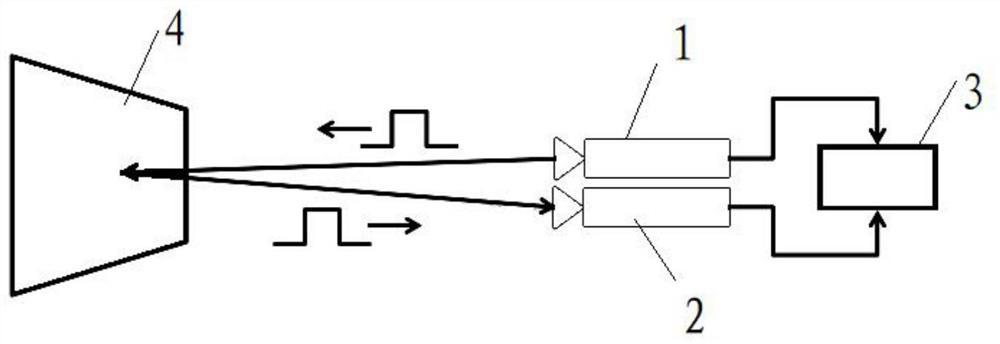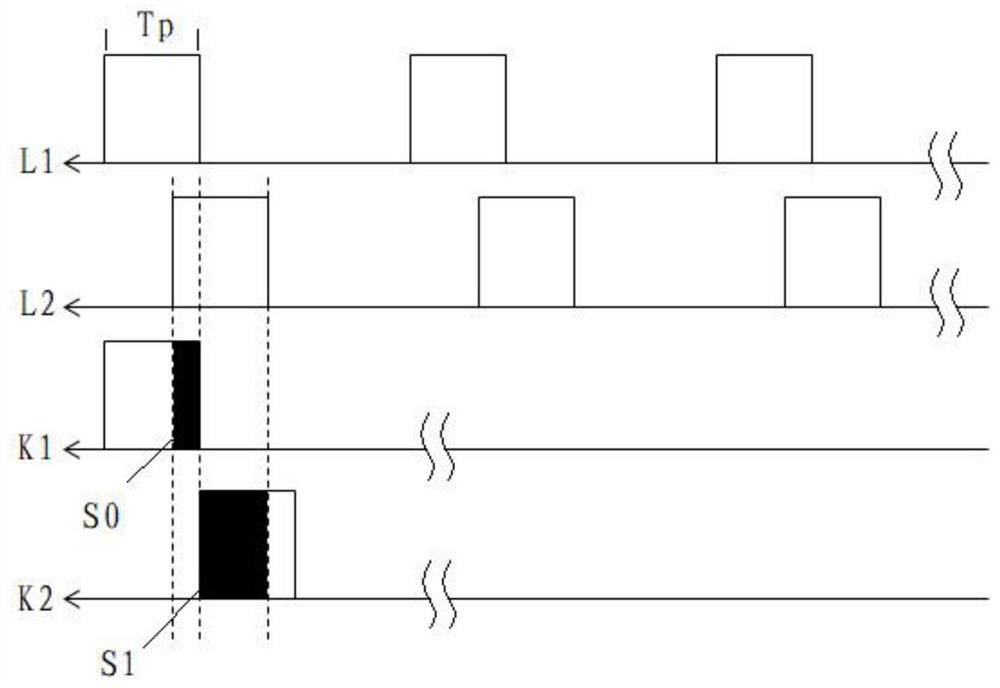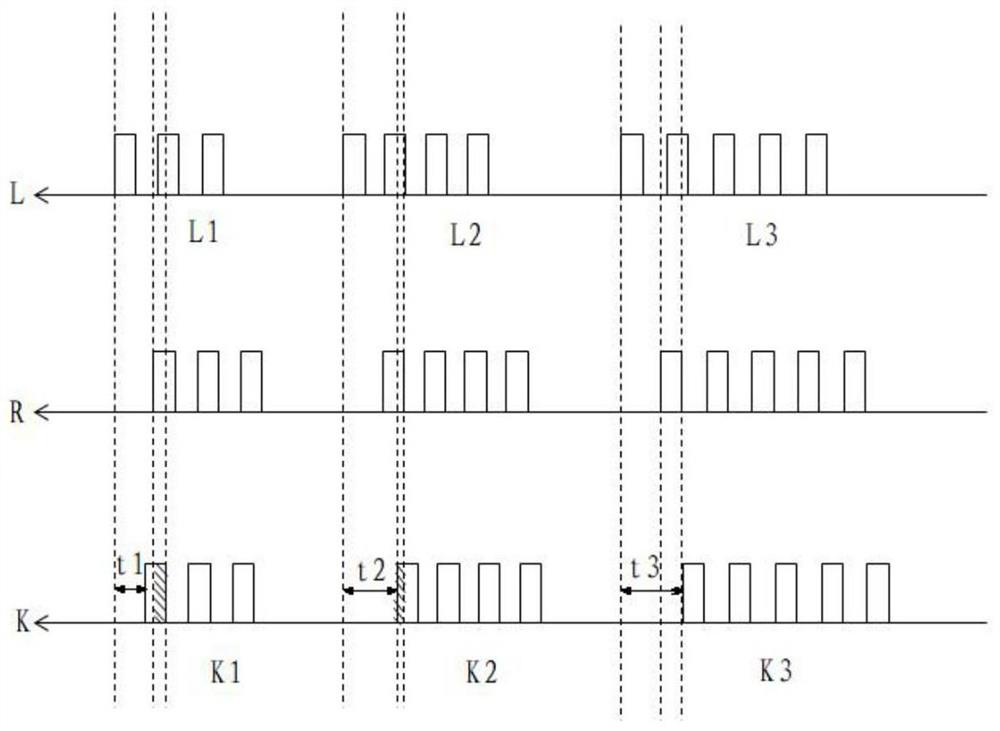A tof depth camera
A depth camera and grayscale technology, applied in instruments, measuring devices, and re-radiation, can solve the problems of large light energy, large measurement error, and small shutter exposure energy, so as to reduce the number of opening times, reduce power consumption, and ensure The effect of stability
- Summary
- Abstract
- Description
- Claims
- Application Information
AI Technical Summary
Problems solved by technology
Method used
Image
Examples
Embodiment 1
[0055] In the first embodiment, the configuration of the pulsed light source and three shutters can be found in image 3 . In this embodiment, the number of openings of the first shutter is equal to the number of pulses of the first pulse, the number of openings of the second shutter is equal to the number of pulses of the second pulse, and the number of times of opening of the third shutter is equal to the number of pulses of the third pulse , wherein the first pulse has the smallest number of pulses, and the third pulse has the largest number of pulses, so that the grayscale of the image acquired by the imaging and detection device under the first pulse is the smallest, and the grayscale of the image acquired under the third pulse is the largest. In this embodiment, the light source and the shutter are adjusted at the same time to obtain different gray scales measured at different distances. The pulse light source and shutter opening times are modulated according to the dist...
Embodiment 2
[0057] In the second embodiment, the configuration of the pulsed light source and three shutters can be found in Figure 7 . In this embodiment, the number of pulses of the first pulse, the second pulse and the third pulse is equal, the number of openings of the first shutter is the least, and the number of openings of the third shutter is the largest, so that the imaging and detection device can operate under the first pulse The gray scale of the acquired image is the smallest, and the gray scale of the image acquired under the third pulse is the largest. In this embodiment, the gray value of the image measured at different distance intervals is controlled by controlling the number of times the shutter is opened. The number of times the pulse light source is turned on keeps the same configuration for each imaging, which can simplify part of the control difficulty.
Embodiment 3
[0059] In the third embodiment, the configuration of the pulsed light source and three shutters can be found in Figure 8 . In this embodiment, the opening times of the first shutter, the second shutter and the third shutter are equal, the number of pulses of the first pulse is the least, and the number of pulses of the third pulse is the largest, so that the imaging and detection device can operate under the first pulse The gray scale of the acquired image is the smallest, and the gray scale of the image acquired under the third pulse is the largest. In this embodiment, the gray value of the image measured at different distance intervals is controlled by controlling the number of times the pulse light source is turned on. The opening times of the three shutters keep the same configuration for each imaging, and only the pulse light source is modulated, which can simplify the shutter requirements.
PUM
 Login to View More
Login to View More Abstract
Description
Claims
Application Information
 Login to View More
Login to View More - R&D
- Intellectual Property
- Life Sciences
- Materials
- Tech Scout
- Unparalleled Data Quality
- Higher Quality Content
- 60% Fewer Hallucinations
Browse by: Latest US Patents, China's latest patents, Technical Efficacy Thesaurus, Application Domain, Technology Topic, Popular Technical Reports.
© 2025 PatSnap. All rights reserved.Legal|Privacy policy|Modern Slavery Act Transparency Statement|Sitemap|About US| Contact US: help@patsnap.com



